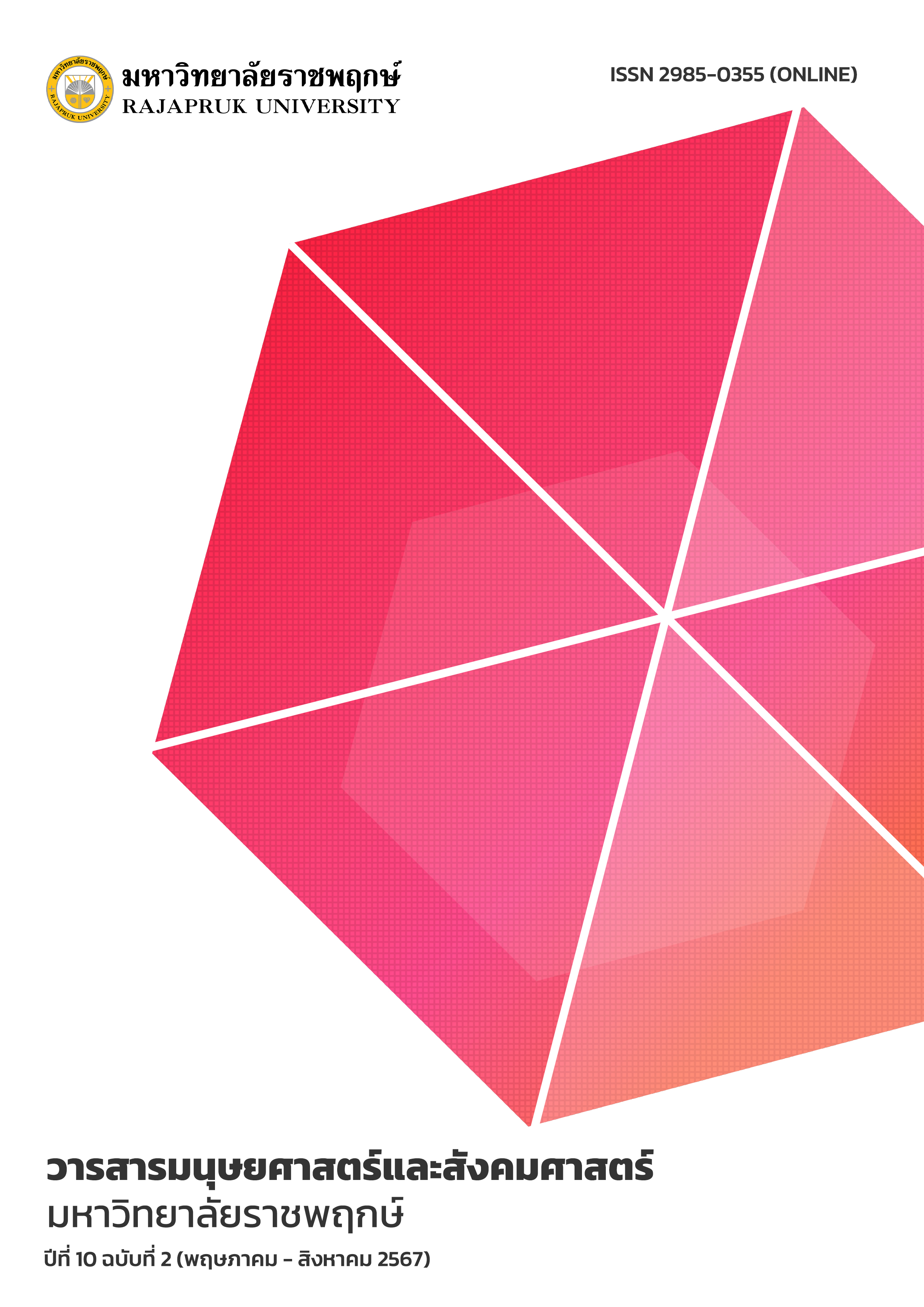Corporate Social Responsibility of Treasury Department, Ministry of Finance According to Opinions and Perceptions of Central Personnel
Main Article Content
Abstract
ABSTRACT
The objectives of this research were to: 1) study the level of opinions of central personnel about the social responsibility of the Treasury Department Ministry of Finance 2) Study the level of perceptions of central personnel about the social responsibility of the Treasury Department Ministry of Finance. 3) compare the opinions of central personnel about the social responsibility of the Treasury Department Ministry of Finance, classified by individual characteristics. 4) compare the perceptions of central personnel about the social responsibility of the Treasury Department Ministry of Finance, classified by individual characteristics and 5) Study the relationship between the opinions and perceptions of central personnel about the social responsibility of the Treasury Department, Ministry
of Finance. A sample group was selected from 325 central personnel working in the Treasury Department. using the probability sampling method, multistage. Data were collected with a questionnaire. The statistics used were amount, percentage, mean, standard deviation, t-test, one-way ANOVA, and Pearson's Product Moment Correlation Coefficient
analysis.
The results showed that central personnel had an agreeable level of opinion about corporate social responsibility in all three fields, with economics having the highest opinion, followed by environmental and social, respectively. There were also moderate levels of perception in all three fields, with environmental having the most perceptions, followed by economic and social, respectively. Personnel of varying ages, salaries,
job functions, and types of personnel had different opinions and perceptions about corporate social responsibility, with the statistical significance level at.05. In addition, the opinions and perceptions of central personnel about corporate social responsibility in the Treasury Department had a moderately correlated level and were unidirectional (r =.556).
Article Details
References
กรมธนารักษ์. (2565). โครงสร้างหน่วยงาน. ค้นเมื่อวันที่ 13 กันยายน 2565, จาก https://www.treasury.go.th/
กองยุทธศาสตร์และแผนงาน กรมธนารักษ์. (2564). แผนปฏิบัติราชการรายปี พ.ศ. 2565 ของกรมธนารักษ์. ค้นเมื่อวันที่ 27 สิงหาคม 2565, จาก https://www.treasury.go.th/th/strategic-plan/
ฐานิตา ฆ้องฤกษ์. (2560). ความรับผิดชอบต่อสังคมกับการสร้างข้อได้เปรียบเชิงการแข่งขันของ
องค์กร. วารสารวิชาการและวิจัย มทร.พระนคร สาขามนุษย์ศาสตร์และสังคมศาสตร์, 2(2): 70-81.
นพวรรณ การสมบัติ. (2559). การรับรู้แนวปฏิบัติความรับผิดชอบต่อสังคมของบุคลากรในสังกัดสำนักงานปลัดกระทรวงมหาดไทย. ค้นเมื่อวันที่ 9 กันยายน 2565, จาก http://www.advanced-mba.ru.ac.th
พิชชาภรณ์ ยามะเพวัน. (2564). การมีส่วนร่วมของบุคลากรในการดำเนินงานเกี่ยวกับความรับผิดชอบ
ต่อสังคม (CSR) ของการไฟฟ้าฝ่ายผลิตแห่งประเทศไทย (กฟผ.). วารสารสถาบันวิจัยและพัฒนา มหาวิทยาลัยราชภัฏบ้านสมเด็จเจ้าพระยา, 6(2): 191-210
วราพร ดำจับ. (2562). รูปแบบการสื่อสารความรับผิดชอบต่อสังคมขององค์กรธุรกิจในยุค 4.0.
วารสารสหศาสตร์ศรีปทุม ชลบุรี, 5(2): 44-56.
วัชถนันท์ ปลื้มใจ, ปกรณ์ ลิ้มโยธิน, และ สิริลักษณ์ ทองพูน. (2559). การรับรู้และทัศนคติที่ประชาชนมีต่อกิจกรรมด้านความรับผิดชอบต่อสังคมของมหาวิทยาลัยหาดใหญ่. การประชุมหาดใหญ่
วิชาการระดับชาติและนานาชาติ ครั้งที่ 7. สงขลา: มหาวิทยาลัยหาดใหญ่.
ศศิวิมล เหลืองอิงคะสุต และ มัลลิกา ผลอนันต์. (2559). ความคิดเห็นของพนักงานระดับปฏิบัติการ
ต่อการดำเนินกิจกรรมเพื่อสังคมของบริษัทมหาชนแห่งหนึ่งในปี 2558. วารสารวิชาการ
มทร.สุวรรณภูมิ (มนุษยศาสตร์และสังคมศาสตร์), 1(2): 138-144.
สุพาดา สิริกุตตา, ไพบูลย์ อาชารุ่งโรจน์, และ ธนภูมิ อติเวทิน. (2558). ความรู้ความเข้าใจ การรับรู้
ทัศนคติเกี่ยวกับกิจการเพื่อสังคม และแนวโน้มการทำงานเกี่ยวกับกิจการเพื่อสังคมของนิสิต
ปริญญาโท คณะสังคมศาสตร์ มหาวิทยาลัยศรีนครินทรวิโรฒ. วารสารวิจัยรำไพพรรณี, 9(3): 74-81.
สุภาทิพย์ บุญพัชรชัย. (2561). ศึกษาความคิดเห็นของพนักงานต่อการจัดกิจกรรมเพื่อสังคม (CSR)
ของการประปานครหลวง. วารสารบัณฑิตศึกษา มหาวิทยาลัยธุรกิจบัณฑิตย์, 6(3): 82-91.
Best, J. W. (1977). Research in Education. 3rded. New Jersey: Prentice Hall Inc.
Carroll, A. B. (1991). The Pyramid of corporate Social Responsibility: Toward the Moral Management of Organizational Stakeholders. Business Horizon, 34(4): 39-48.
Elkington, J. (1997). Cannibals with forks: The triple bottom-line of 21st century business.
Oxford: Capstone.
Gunder, M. (2007). Sustainability: Planning's Redemption or Cuesr?. Retrieved October 9, 2022, from http://www.planetizen.com/node/22812
Selvanathan, M., Jayabalan, N., Saini, G.K., Supramaniam, M. & Hussin, N. (2020).
Employee Productivity in Malaysian Private Higher Educational Institutions.
PalArch's Journal of Archaeology of Egypt / Egyptology, 17(3): 66–79.
Titko, J., Svirina, A., Tambovceva, T. & Skvarciany, V. (2021). Differences in Attitude to
Corporate Social Responsibility among Generations. Sustainability, 13: 1-12.
United Nation. (2011). The ten principles: United nations global compact. Retrieved
October 9, 2022, from https://www.unglobalcompact.org/what-is-gc/mission/principles.
Yamane, T. (1973). Statistics: An Introductory Analysis. 3rded. New York: Harper and
Row Publications.


